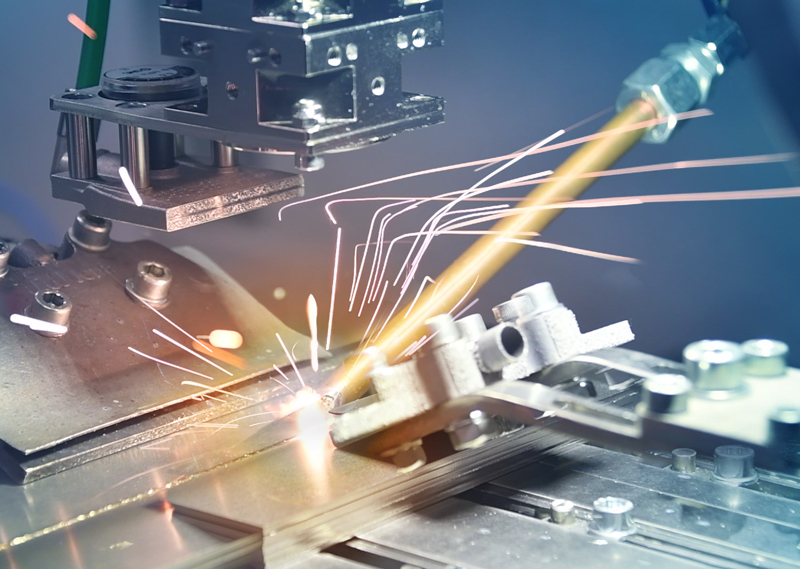Optimized air during laser welding ensures efficiency and safety

High air flow velocities and low turbulence are required to reliably keep welding spatter and rising particles away from scanner optics during laser processing. For the “Silent Cross” research project funded by the German Federal Ministry for Economic Affairs and Energy, work began on determining the required flow velocity for existing Crossjet nozzles. The scientists at ifw Jena then began optimizing the design of the nozzles.
Extensive CFD (computational fluid dynamics) simulations were carried out to keep the air flow as uniform as possible when it exits the nozzle and to use as little compressed air as possible. This made it possible to optimize the arrangement, shape, and course of the compressed air channels within the Crossjet nozzles in a resource- and time-saving manner.
“Computer-aided simulation allows us to implement our ideas digitally and test their efficiency,” says Andreas Fey, who led the project and conducts research in the field of simulation at ifw Jena. “Simulation largely saves us the time-consuming process of manufacturing various test prototypes and conducting practical experiments.” Only when the design of the Crossjet nozzles with their channels for directing the compressed air had been optimized to such an extent that satisfactory results were achieved in simulations did the production of prototypes begin.
“In designing the compressed air channels, we took full advantage of the benefits of additive manufacturing,” Andreas Fey continues, “Thanks to the design freedom, especially with regard to the internal geometries, there were virtually no restrictions on us to design the channels exactly as we needed them for optimal airflow.”
The first Crossjet prototypes made of metal were then constructed using powder bed-based laser beam welding. In this 3D printing process, a thin layer of metal powder is applied to a build platform and melted in the desired locations using a laser beam. The next layer of powder is then placed on top, which is also melted and thus “welded” to the powder layer below. Layer by layer, the digitally designed component is created. The process is particularly suitable for geometries that would otherwise be inaccessible, such as the flow-optimized compressed air channels inside the nozzles. These could not be produced using conventional methods such as drilling or milling.
The 3D-printed prototypes were then extensively tested in the laser laboratories of ifw Jena. Laser welding processes with different parameters were used to examine the escaping air pressure, noise level, and, above all, contamination and damage to the optical components of the laser, and these were compared with conventional crossjet nozzles.
Andreas Fey is satisfied with the results of his work: “At the end of the project, we can present crossjet nozzles with widths of 50, 100, and 150 mm that completely protect the optics while operating more quietly and, above all, more energy-efficiently.” The nozzles generate noise emissions of around 60 dB, which is roughly equivalent to the volume of a normal conversation. Compared to conventional crossjets, the flow-optimized 3D-printed nozzles require 83% less compressed air to effectively deflect welding spatter.
With the project results, ifw Jena provides users of laser welding applications with a flexible set of crossjet nozzles that companies can use to reduce their resource consumption and increase the occupational safety and well-being of their employees thanks to low noise emissions.
The research project was funded by the Federal Ministry for Economic Affairs and Energy.



